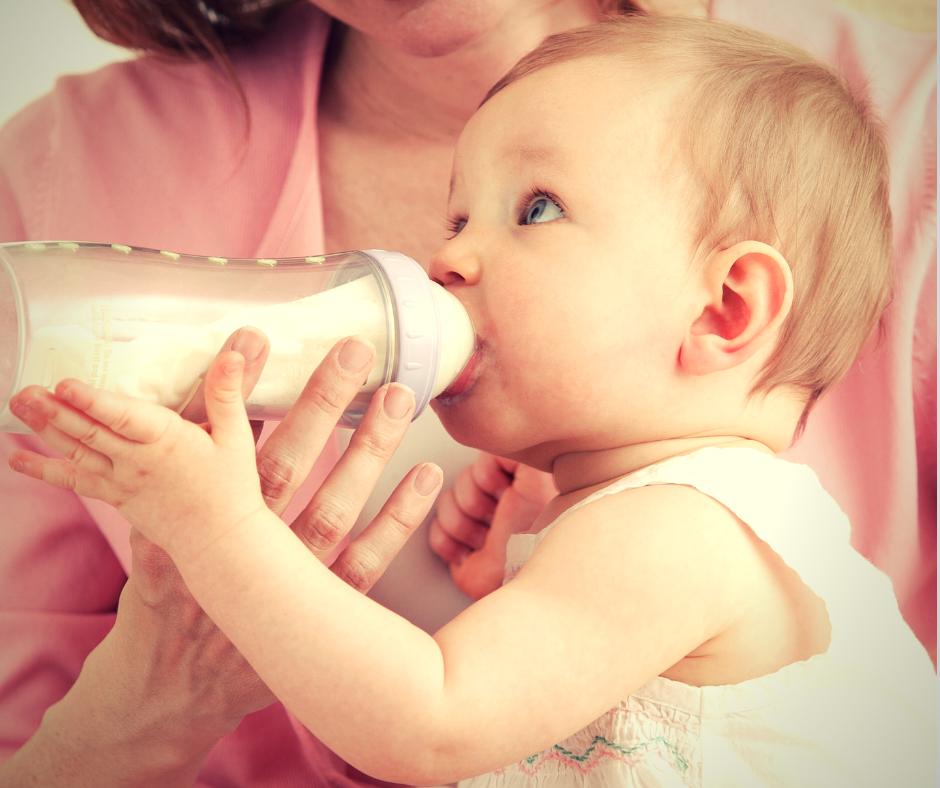By Sarah Berns
Like most pregnant people, I found hundreds of things to worry about while I was carrying our daughter: labor, how our lives would change, the possibility of her becoming sick or getting injured. Though I worried about breastfeeding challenges, I didn’t worry about the possibility of a tongue-tie or the difficulty of diagnosing and deciding whether and how to treat one, probably because I’d never heard about it before! When my wife and I found ourselves facing these choices with a two-month old baby, overwhelmed with the stress of feeding difficulties and exhausted, I wanted to hear from people who’d faced similar issues and decisions. I’m glad to be able to share our family’s experience with the HBHM community.
We had significant doubts throughout the process, but perhaps especially when trying to discern if our daughter might have a tongue tie. Though she was slow to gain weight, she had no other common signs or symptoms: she nursed happily, was not fussy or gassy, caused no nipple pain or damage. When we began to research the possible causes of slow weight gain in breastfed infants, tongue tie and lip tie came up, but the sources we trusted, including the AAP, were somewhat skeptical. Tongue ties are overdiagnosed and under researched, they suggested, and correction might not resolve feeding issues.
At this point, as our daughter approached her two-month checkup, we were trying everything we could to help her eat well and gain weight more quickly. With the help of her pediatrician and Kathy Moren of HBHM, we’d set up an intensive routine: I would breastfeed our daughter for up to an hour and then pump while my wife offered her a bottle of expressed milk or formula. Like many breastfeeding parents, my supply diminished due to inefficient milk removal, and I pumped 10-12 times daily on top of regular nursing in an effort to produce enough milk for all of the supplementation. Though I got closer each day, I never totally caught up to her demand.
We have multiple friends who’d attempted similar routines and ultimately decided to stop nursing, finding bottle feeding easier on the whole family. This wasn’t our story largely because bottlefeeding wasn’t easier for us: it would often take the baby an hour or more to finish a two ounce bottle of milk. Eventually, she would crash, exhausted, and sleep for only a short time before we had to wake her to begin the process again. The whole cycle was exhausting, and truly only possible because both parents were on parental leave and we were also lucky to be supported by a wonderful postpartum doula, Jacquie Procopio, who offered endless encouragement as well as the logistical help we needed to focus on feeding full-time.
Both Kathy and Jacquie suggested that it might be worth having our daughter evaluated for a posterior tongue tie, a type of tie that is both less researched and more difficult to diagnose visually than an anterior tie. We made appointments with an ENT and a pediatric dentist, and continued to do our own research. The appointments were starkly different. The ENT inspected her mouth and quickly and confidently confirmed the absence of an anterior tie or a tie in the upper lip, suggesting that she’d likely grow out of her slow eating. The dentist, Dr. Carolyn Lubrano, focused more on function in her assessment, feeling our daughter’s suck with her finger (“disorganized,” she noted), asking about her eating speed and patterns, noting the development of her palate. She diagnosed a posterior tie and an upper lip tie, showing us how inability to fully lift her tongue or flange her lips showed in our baby’s sucking blister, the thick, white coat of milk on her tongue, and the high, narrow roof of her mouth. She recommended laser revision and a course of cranio-sacral therapy.
We struggled deeply with the decision, as I’m sure any parents considering a frenectomy or other medical procedure for their infant do. As professional researchers, we both had doubts about the lack of peer-reviewed literature, particularly controlled studies, evaluating the efficacy of posterior tongue tie revision. We worried that it would hurt her, that it wouldn’t work, that she might scar badly. We knew her insurance would not cover treatment, and worried about the high cost if it was ineffective. As the breastfeeding mom, I felt guilty that part of my motivation was a desire to more easily nurse my baby: after all, many moms I respected deeply had decided to exclusively pump or formula feed in similar situations. Was I being selfish?
We sat with our options. I spoke to other families who’d had revisions and all reported positive changes. We watched our growing baby become more frustrated both nursing and bottle-feeding, and began to worry about the emotional and psychological costs of her difficulty eating. We thought about returning to work, and doubted whether any childcare facility would be able to feed her all day long. Eventually, after many reassurances that the revision was quick and only slightly painful, that complications were extremely rare, we decided it was worth the risk of failure. Lucky to be able to afford treatment, we felt that the cost and anxiety were worth any possibility of improvement.
About a week later, we went in for the revision. It took less than ten minutes, and our daughter was easily soothed with her pacifier and cuddles. It was much, much less scary than I’d imagined. She nursed immediately afterward and fell deeply asleep. Some differences were immediately apparent: her jaw moved more dramatically, and, for the first time, I could see the suck-swallow-breathe sequence. Other aspects seemed unchanged: I still needed to manually flange or flip her upper lip at every feed, she often fell asleep nursing, and was not much faster. As planned, we added cranio-sacral therapy, a gentle manipulation of the mouth, skull, and spine, at Bayside Chiropractic. Over a few weeks, with patience and regular nursing, chiropractic care, and home exercises, the difference grew. She ate more fully and quickly, and we increasingly found ourselves with time when she was neither eating nor sleeping. We began to play and rest. She was often too full for the offered bottles. At a weighed feed, she transferred twice the volume she had previously. For the first time, she could keep a pacifier in her own mouth. As my expressed milk began accumulating in the fridge and freezer, I dropped pumping sessions, realizing only in retrospect that we’d last needed to supplement with formula the night before the revision. The impact on my supply had been immediate.
The one thing that never changed was the concern that had started the whole process: her slow weight gain. She never had a sudden jump in size, nor even a slow increase in growth rate. Seeing her happy and satiated, achieving developmental milestones and finding delight and comfort from breastfeeding, though, we began to worry less. She’s four months old now and we’re nursing 95% of the time, with bottles of expressed breast milk when it’s more convenient. Soon, she’ll begin eating solid foods—maybe then we’ll see a weight jump. Or maybe not until she’s big enough for clam cakes and Del’s, or after-school sports. Maybe she’ll always be small.
In the end, perhaps this was the most important benefit of treating the tie: we were able, as a family, to move from an acute focus on numbers—pounds, fluid ounces, hours—to the rhythm and trust of breastfeeding on demand. We know that our daughter will let us know when she’s hungry, that she can eat until she is full, and we’re able to fill the time between those states with all the other things babies and moms need: books and walks, games and friends.
This is, of course, just one story. I’d still love to see more research on tongue ties and their treatment. Even more, I’d love to see all of these remedies and supports—chiropractic, revision, lactation consultants, doula care, supportive pediatricians—more widely available and affordable. We are so lucky to have been able to choose this path. If you’ve been struggling with similar choices, I hope our story provides a little more information and makes your path easier.











